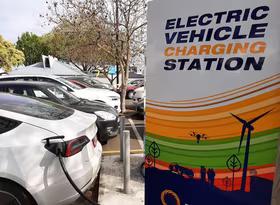Will COVID-19 continue the downward trend in regional inequality?
The COVID-19 pandemic will see very few winners. We will all come out poorer and worse off, but some will lose more than others. Low skilled workers, young workers, Māori and Pacifica workers are more vulnerable and likely to be hardest hit. These effects will exacerbate existing inequalities.
But what about regional inequality? Will the pandemic deepen it? Regional inequality is an issue which is close to our hearts and the desire to reduce it is at the heart of the Provincial Growth Fund. The Fund directs money into regions that are disadvantaged with higher unemployment, lower productivity, and lower social outcomes with the desire to reduce regional disparities.
Regional inequality still falling
In an article in 2014, a time when the term Zombie Town was being thrown around liberally, I argued that too much had been made about regional inequality in New Zealand. Our analysis showed that regional inequality was a lot lower in New Zealand than in a range of wealthy nations. At that time, our figures showed that GDP per capita in the wealthiest region in New Zealand was about 2.1 times higher than the poorest region, compared with ratios of about five in the US and ten in the UK.
Furthermore, in that article I argued that regional inequality had been declining in New Zealand since the Global Financial Crisis (GFC). Using more recent New Zealand data we can confirm that this trend has been continuing, with the ratio sitting at about 1.9 in 2019 (see Chart 1).
In contrast analysis by The Economist shows that regional inequality has continued to worsen in the Eurozone since the GFC.
The above analysis uses GDP per capita as the unit of measurement but we are well familiar with the shortcomings of GDP as a measure of wellbeing. Taranaki, with its capital-intensive energy sector, had the highest GDP per capita for many years (it has recently been surpassed by Wellington Region), yet its social outcomes were in the middle of the regional pack.
Closing the regional income gap
Infometrics has since developed a robust time series of average household income for all regions and territorial authorities. Using this alternative data source, we can measure the ratio of the wealthiest region to the poorest region from 2000 to 2019.
The analysis shows that regional inequality, as measured by average household income, peaked in 2006 with a ratio of 2.5 and has since declined to 1.7 in 2019 (see Chart 2). Over the entire period Auckland had the highest average household income and Tasman Region had the lowest.
An uncertain path for recovery, and regional inequality
The COVID-19 pandemic will impact regions differently. Regions with strong exposure to international tourism and education will be most negatively affected while those with a focus on food production and processing will be least affected.
The overall effect this will have on regional inequality is not clear. The main cities including Auckland, Christchurch and Wellington City with high average incomes will be relatively hard hit. Queenstown Lakes District also has very high average incomes, and a significant tourism concentration, meaning it will be one of the hardest hit areas.
However, many other districts including Mackenzie, Kaikōura, Rotorua, Taupō and the West Coast districts which have a high dependency on international tourism and low average incomes will see a sharp decline in household incomes.
Only time will tell whether the net impact of the pandemic will continue the downward trend in regional inequality.



















